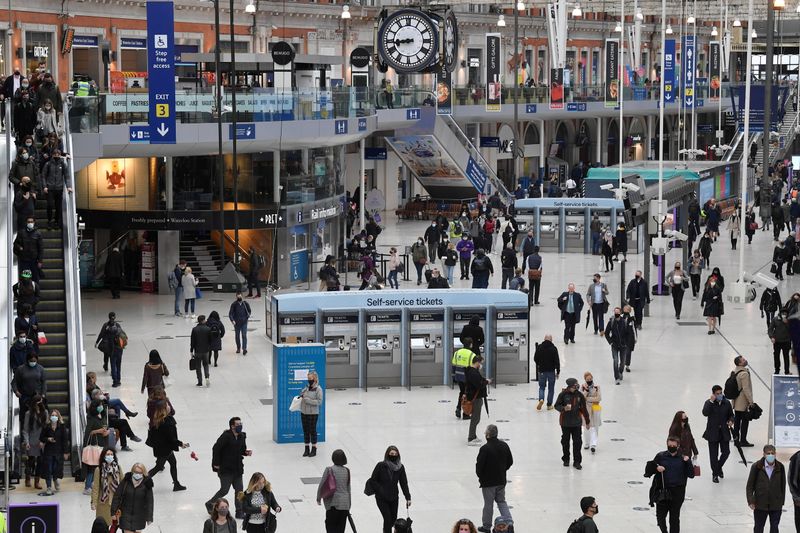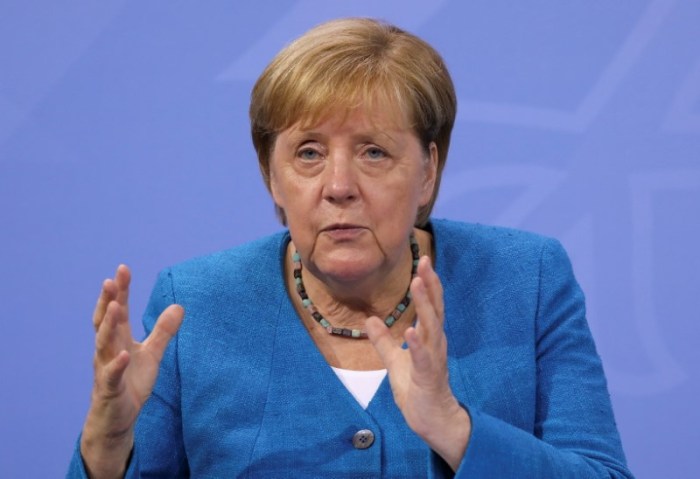By Andy Bruce and William Schomberg
LONDON (Reuters) -The number of employees on British company payrolls has moved closer to pre-pandemic levels and pay growth hit a record high, albeit distorted by the effects of coronavirus lockdowns, official data showed on Tuesday.
As Britain’s economy extends its recovery from last year’s slump, payrolls https://tmsnrt.rs/3xWIyjQ rose by 182,000 in July to 28.9 million – 201,000 below the level before the COVID-19 pandemic hit.
The Office for National Statistics also said the headline unemployment rate fell to 4.7% in the three months to June, its lowest since the three months to August 2020.
Economists polled by Reuters had mostly expected the unemployment rate to hold at 4.8%.
The figures are likely to bolster Bank of England officials’ confidence that the economy will emerge from the pandemic with less long-term damage than first feared by many forecasters.
“Overall, today’s report once again points to a rapidly firming labour market,” said Investec economist Ellie Henderson.
“However, with the latest data indicating that 1.9 million people were still in furloughed employment in June, the real test will be how the labour market responds to the ending of the furlough scheme in September,” she said, referring to the government’s job-retention scheme.
On the strength of Tuesday’s labour market report, JPMorgan brought forward its forecast for the first BoE interest rate increase by six months to the second quarter of 2022 – broadly in line with expectations in financial markets.
A Reuters poll of economists published on Monday suggested the BoE would wait until 2023, despite the bounce-back in the economy. [ECILT/GB]
The ONS said hours worked in a week surpassed the 1 billion mark for the first time since the pandemic began and there was no sign of a surge in redundancies before the expiry of the furlough programme at the end of September. At its peak, in May 2020, the scheme paid the wages on 8.9 million jobs.
“I know there could still be bumps in the road but the data is promising,” finance minister Rishi Sunak said.
The BoE believes unemployment has probably peaked and no longer expects a jump when the furlough scheme ends.
Vacancies in the three months to July hit a record high of 953,000, up by 168,000 on their pre-pandemic level, the ONS said. Many employers have said they are struggling to find staff as the economy emerges from lockdowns.
PAY POWERS HIGHER
The ONS said average weekly earnings in the three months to the end of June rose by 8.8% compared with a year earlier – the highest reading since records started 20 years ago but skewed upwards by the effects of the pandemic.
More people on low wages lost their jobs than people who are better paid.
The average weekly earning figures for the May-July period, due to be published next month, are used in the “triple lock” process for deciding the increase in the value of state pensions.
Sunak has suggested he will not automatically follow that process this year.
Underlying total pay could be rising at between 4.9% and 6.3% a year, the ONS said, noting uncertainties about how the estimates were reached.
Samuel Tombs, an economist at consultancy Pantheon Macroeconomics, said he thought pay growth was likely to lose momentum after the end of the furlough programme.
“As such, there is enough slack in the labour market to prevent wage growth concerning the (Bank of England),” he said.
(Reporting by Andy Bruce, Editing by William Schomberg and Timothy Heritage)



















